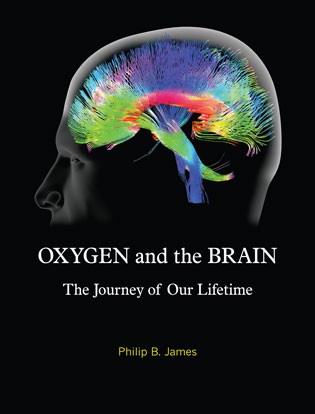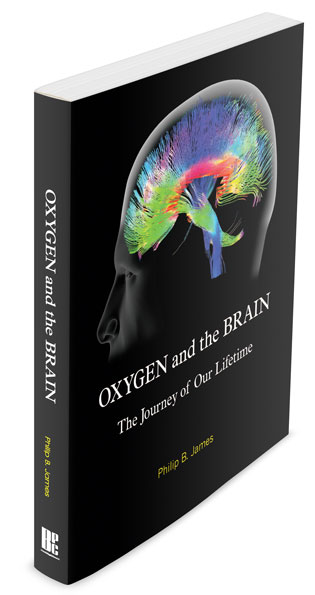DEPTH Blog
Stroke and Hyperbaric Oxygen Treatment
"When we have a stroke, our brain is starved of oxygen, causing the catastrophic death of nerve cells and leaving us paralysed and unable to speak." - Colin Blakemore, neuroscientist quoted in the Daily Telegraph, March 2010.
What is a stroke?
Stroke is an ill-defined lay term that has forced its way into general use in medicine to describe a variety of neurological symptoms resulting from a reduction of blood flow. It is usually to an area of the brain but, much less commonly, may involve the spinal cord. The symptoms of a stroke are usually sudden in onset and the most easily recognised form involving the brain is known as a hemiplegia. Half of the body, most commonly the left side, develops weakness or paralysis and it may include the muscles of the face, causing drooping of the mouth. The reduction of blood supply responsible is usually the result of material obstructing flow along one of the middle brain arteries supplying the motor cortex of the hemispheres or the nerve fibre pathways passing through the centre of a hemisphere. This may be due to the local accumulation of clot, known as thrombosis,3 or to an embolism.
The term stroke may also be applied to areas of damage to structures in the middle of the hemispheres of the brain and involve the basal ganglia and the central white matter. The arteries supplying the brain stem, the rear of the brain, and the cerebellum, which nestles above the nape of the neck, may also suffer blockage and very rarely the spinal cord may be affected by a stroke . . . The lack of oxygen from the reduction of blood flow may lead to disruption of the blood-brain barrier.4,5 In both location and the extent of the tissue destruction, the white matter damage is essentially the same as in the most severely affected areas in patients with multiple sclerosis. As discussed, the passage of small emboli damage the blood-brain barrier directly and there is increasing recognition that this mechanism underlies the development of dementia and Alzheimer’s disease in the elderly.6,7
References
3. Nishida N, Chiba T, Ohtani M, Yoshioka N. Selective obstruction of lateral striate capsular arteries due to small cardiogenic embolus as a cause of acute cerebral infarction limited to unilateral putamen. Eur J Neurol 2006;13:e1-e2.
4. Imakita S, Nishimura T, Naito H, et al. Magnetic resonance imaging of human cerebral infarction: enhancement with Gd-DTPA. Neuroradiology 1987;29:422-429.
5. Latour LI, Kang D-W, Ezzeddine MA, et al. Early blood-brain barrier disruption in human focal brain ischemia. Ann Neurol 2004;56:468-477.
6. Stewart PA, Hayakawa K, Akers MA, Vinters HV. A morphometric study of the blood-brain barrier in Alzheimer’s disease. Lab Invest 1992;67:734-742.
7. Wardlaw JM, Sandercock PAG, Dennis MS, Starr J. Is breakdown of the blood-brain barrier responsible for lacunar stroke, leukoaraiosis and dementia? Stroke 2003;34:806-812.
(Reference: James, P.B. Oxygen and the Brain: The Journey of Our Lifetime. North Palm Beach: Best Publishing Company; 2014.)
Disclaimer: The opinions expressed in this work are those of the author(s) and do not reflect the opinions of Best Publishing Company or its Editors. Information contained in this work has been obtained by Best Publishing Company from sources believed to be reliable. However, neither Best Publishing Company nor its authors guarantees the accuracy or completeness of any information published herein and neither Best Publishing Company nor its authors shall be responsible for any errors, omissions, or claims for damages, including exemplary damages, arising out of use, inability to use, or with regard to the accuracy or sufficiency of the information contained in this publication. No responsibility is assumed by the Publisher or Editors for any injury and/or damage to persons or property as a matter of product liability, negligence, or otherwise, or from any use or operation of any methods, product, instructions, or ideas contained in the material herein. No suggested test or procedure should be carried out unless, in the reader’s judgment, its risk is justified. Because of rapid advances in the medical sciences, we recommend that the independent verification of diagnoses and drug dosages should be made. Information in this publication is current as of the date of the printing. All rights reserved. No part of this work may be reproduced, stored in a retrieval system, or transmitted in any form or by any means, electronic, mechanical, photocopying, recording, or otherwise, without written permission from the publisher.
When you subscribe to the blog, we will send you an e-mail when there are new updates on the site so you wouldn't miss them.








